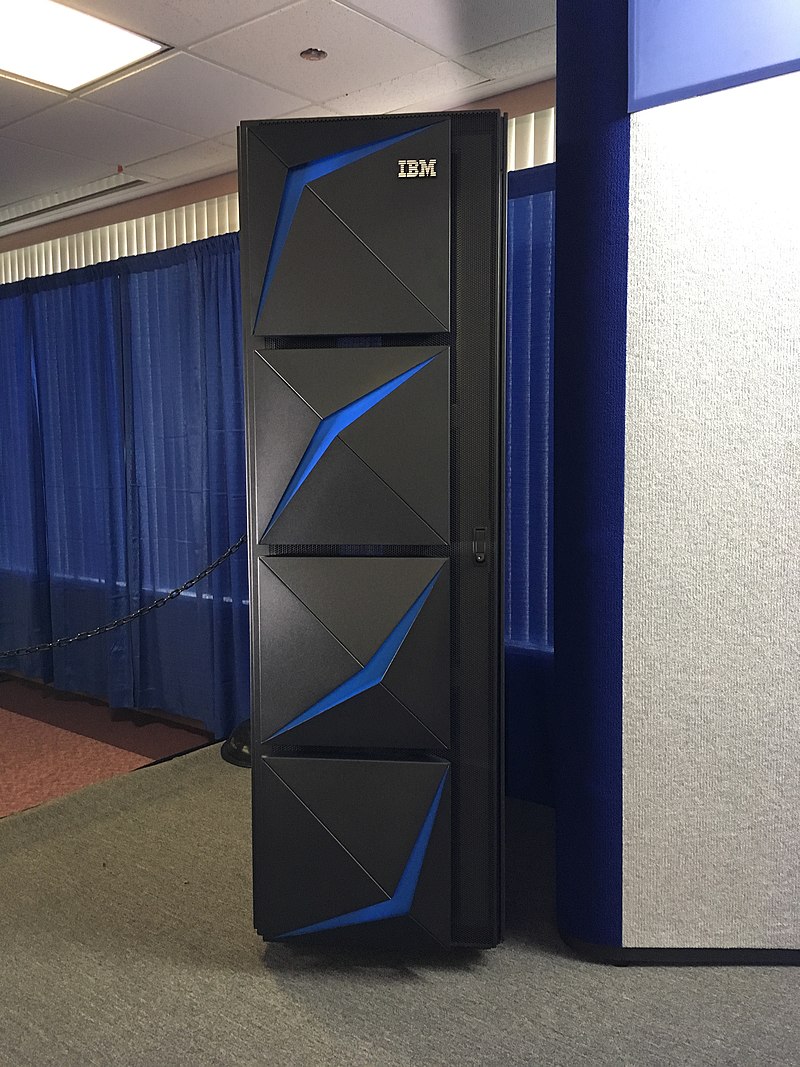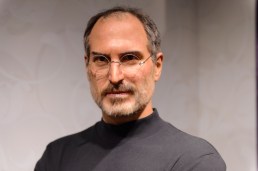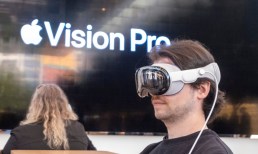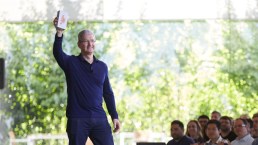
Sixty-three years ago this month, the world’s first supercomputer was born. In May of 1961, IBM introduced its Model 7030, also known as “Stretch.” The gamechanger was its computational processing power and speed. Computers were used mostly for scientific applications at the time, and crunching massive data sets was time consuming and tedious.

“Stretch” reduced the processing time of complex data sets from six months to a single day.
Three years later, in 1964, IBM introduced its System 360 Mainframe, marking a significant milestone in business efficiency. The System 360 bundled IBM hardware with software and services, making them easy to buy, use and upgrade. Businesses could also, for the first time, run multiple applications simultaneously using a single computer.
Mainframes, and the sale of them, propelled IBM into becoming one of the most valuable companies in the world.
By 1990, IBM was the 4th largest company on the Fortune 500 list; at the turn of the millennium, it was number six measured by revenue.
Companies and governments in need of massive, reliable, fast and redundant computing power bought them as fast as IBM could make them.
Ten years later, IBM’s fortunes began to shift — as did its place on the Fortune 500 list.
IBM lost $5 billion in 1992, the most ever for a company at that time, after losing billions in each of the years before that. Between 2012 and 2020, IBM reportedly lost $95 billion in market cap.
Many case studies written about IBM’s downward spiral cite a series of strategic management, pricing and partnership blunders, and a costly shift from its B2B core to personal computing in the 1990s. Those costly mistakes sapped time, dollars and focus from what was necessary to innovate for the future.
| This blind spot came from believing that IBM mainframes were so central to the core of the business that customers would always upgrade and buy high-margin services, but never leave. |
But in the early 2000s it would be its failure to recognize cloud computing as the cornerstone for computing in the digital age that would become IBM’s corporate cross to bear. This blind spot came from believing, early on, that IBM mainframes were so central to the core of the business that customers would always upgrade and buy high-margin services, but never leave.
That’s what Lou Gerstner observed when he was brought in to turn IBM around in 1993. At the time, he cited “corporate arrogance” as a contributor to the company’s lack of urgency to shift focus, blaming a leadership team who believed too much in its own PR. The “no one ever got fired by buying IBM” mantra fanned those flames.
Until, of course, it didn’t.
By the end of 2010, IBM had slipped to 65th place on the Fortune 500 list and has remained solidly stuck there for the last 14 years.

It is estimated that 10,000 mainframes exist today, mostly IBM vintage, and mostly owned by the largest companies in the world. It’s reported that two-thirds of the Fortune 500 companies use them, as do 45 of the top 50 banks and 70% of the world’s largest retailers. Big Iron, as these mainframes are collectively called, processes about 90% of credit card transactions today. There’s a great story about the history of IBM and mainframes here.
Companies still buy mainframes because they are reliable and efficient data processing workhorses, despite the dearth of COBOL programmers and the cost to keep them running. They upgrade them because there’s no other option — at least, not right now.
Analysts project that the mainframe market will grow a modest 6.4% a year over the next seven years – from $2.5B in 2023 to $4.5B in 2032. IBM’s revenues from mainframe sales are expected to get a 3% to 5% lift in 2024 as new models are introduced and existing users upgrade their software and service agreements.
But experts, investors and analysts agree that IBM’s future can’t be about squeezing every last drop of milk from its flagship product, even though it will help keep the lights on in the near term.
Today, IBM is playing a costly game of catch-up — the cloud computing market was valued at roughly $588 billion in 2023 and is expected to reach $2.2 trillion in 2032 with a growth rate that is two and half times the mainframe sector. The shift from mainframes to the cloud may be a many-years, even decades-long, journey for its current users. But it is so important for achieving key strategic objectives that any IT department worth its salt is planning for it, has probably even started, and is likely working with the big cloud providers and their partners to guide the process.
Then, there’s AI.
IBM was an early innovator with Watson in 2004, yet they are rarely mentioned as a key contender when AI or GenAI discussions are had today. IBM made a big bet on healthcare, investing billions to build Watson Health and another $5 billion to acquire companies for their data. The focus was oncology; diagnosing and prescribing personalized cancer treatments was the use case. All signs seemed to point to a slam-dunk winner.
Soon after Watson Health’s 2016 launch, doctors found its patient diagnoses to be inaccurate and irrelevant, citing representative data limitations. They stopped using it. Watson Health was sold to a private equity firm six years later, in 2022, for $1 billion.
In 2000, Apple was 285th on the Fortune 500 list, having fallen 162 places (from 123) in 1995. A series of costly product, pricing and competitive blunders led to big losses each year between 1994 and 1997. In 1997, Apple reported a Q1 loss of $708 million, destroying 85% of the company’s value, and nearly tipping the company into bankruptcy.
That was also the year that Steve Jobs returned to Apple. 
He persuaded the board to give him some time to reposition the company and create better and more accessible personal computer products. He brought with him his dream team, including Jony Ive and Tony Faddell. That team — and the launch of colorful iMacs — brought Apple back to life.
So did the repositioning of the firm as a software company powered by cool consumer hardware — and the opening of 500 retail stores to give consumers a way to touch and experience Apple products before buying them.
The launch of the iPhone in 2007 and the App Store in 2008 would cement Apple’s place in history as having created the one of the most transformative consumer products of all time.
By 2010, Apple had jumped 229 spots to 56th place on the Fortune 500 list.
By 2020 it had moved fifty more to sixth place.
In 2023, Apple occupied spot number four. And its market cap reached $3 trillion.
Apple’s success over the last 24 years represents one of the, if not the, most successful turnaround stories of all time. Since the iPhone launched in 2007, it has grown its annual revenue 16X — from $24 billion in 2007 to $383 billion in 2023. The iPhone user base counts 18% of the world’s population or 1.46 billion users. In the U.S., 55% of the adult U.S. population owns an iPhone, with many of them representing the most affluent consumer spending demographic.
On Apple’s Q2 FY 2024 pep rally earnings call, CEO Tim Cook described Apple’s “amazing” quarter, using the word “all-time” 14 times to describe Apple’s performance to investors, along with other superlatives such as “groundbreaking.”
This as iPhone revenue was reported down by 10%, iPad revenue down by 17% and Wearable device sales down by 10%. Apple also guided single digit growth in iPhone sales for the rest of the year.
Cook described Apple’s latest hardware innovation, Vision Pro, as “exciting” and a big hit, citing nearly half of all Fortune 500 companies as buyers exploring “innovative” use cases. He failed to say how many units were purchased by individuals and which use cases companies are exploring, even though he was asked.
GenAI plans were also vague, but described as a very key opportunity for Apple. Everyone expects details at Apple’s annual World Wide Developers Conference about a month from now (June 10). Already, the hype machine is spinning at warp speed.
Apple’s earnings bright spot was the increase of 14% in Services revenue with double-digit increases guided for the balance of the year. It’s not transparent about what accounts for that growth, although Apple did report a total of one billion subscribers to Apple One. That’s roughly two-thirds of its user base.
Analysts and investors remain bullish on Apple’s future. Its stock price is up 8% since reporting its quarterly results. Many say that’s just because the results weren’t as bad as they expected. Warren Buffet, whose Apple stakes once comprised 50% of Berkshire Hathaway’s portfolio, just sold 13% of his shares. Nothing bad, he said — it was just time to cash in and move on.
Everyone seems optimistic (hopeful?) that GenAI will juice future iPhone sales and stem defections to the Android handsets that already include GenAI powered software.
And why not? The iPhone and its business model created the smartphone category, the device that connects the physical and digital worlds for its users.
The indispensable consumer product that anchors the digital transformation and has become the centerpiece of life inside the Apple ecosystem.
And it’s Apple.
Despite all its stunning achievements, by any objective measure Apple faces multiple serious and strategic issues. Issues so fundamental that everyone should be asking questions about the many assertions supporting its future as a leading mobile technology ecosystem — and its stratospheric market cap.
The iPhone and the iMac were big hits. But that is where the big hit parade seems to slow down.
| By any objective measure Apple faces multiple serious and strategic issues. |
Wearables were a hit for a time, but now not so much. The HomePod was an outright flop. Like most AR/VR headsets, the Vision Pro seems a niche product that got a PR and fanboy pop but seems to struggle to gain adoption. The Connected Car, billed as Apple’s biggest flagship product since the iPhone, was shuttered after a decade-long attempt to make it road-and consumer-ready. And don’t even try to ask Siri where Apple was when AI took off in late 2022.
Unless Apple has another transformative product innovation hiding up its sleeves, Apple’s growth is entirely dependent upon people buying the next generation of iPhone, upgrading them and using them. The same form factor, more or less, that they have been buying for the last 17 years.
And as goes the iPhone, so goes Services.
Without the iPhone, there is no Services revenue or double digit increase that comes from using Services — the part of Apple’s business that is high-margin and touted as its growth engine.
That may be harder to assume than it was a year or so ago.
At the end of the first three months of 2024, Apple ceded its global handset leadership to Samsung. Apple’s iOS users are a third of Android’s with 3.3 billion users and a 41% global share.
There’s China, which, along with AI, could mark the biggest headwinds Apple has seen since the bad old days of 1994. China is Apple’s third largest market accounting for roughly 17% of its sales. For the first three months of 2024, iPhone revenue there fell 19%, as Huawei sales jumped.
Of course, it doesn’t help that the Chinese government forbids government officials from using iPhones and arranged key photo ops of all of them clutching their Huawei handsets. But don’t blame the Xi regime. Chinese consumers, who are now feeling the spending pinch, can get better, cheaper phones and don’t need to rely on Apple’s app ecosystem given the widespread use of WeChat.
In a double hit to both Tesla and Apple, handset maker Xiaomi announced the debut of a low-priced electric vehicle that is also totally integrated with the phone. Now the Chinese consumer can get a two-fer — a good-looking and inexpensive EV, totally integrated with a digital ecosystem powered by Xiaomi.
Although it will take time to see the impact of the loss of the China iPhone sales to its corresponding Services revenue, it seems inevitable.
| Perhaps Apple’s biggest threat is AI, where, like IBM, it squandered its early lead. |
There’s Apple’s business model, a foundational pillar of its innovation and competitive advantage. It is also one under attack in nearly every jurisdiction worldwide, forcing Apple to open its App Store to competing payments processing systems and dinging its Services revenue further.
There’s high-margin search revenue. Safari’s search was so bad, it needed Google to step in. And it did — for a fee that became a win-win for them both. But depending upon how the Google antitrust case works out, Apple may be out the high-margin $18 or so billion a year they get from Google to power search on the iPhone. That reportedly accounts for 36% of Safari’s annual ad revenue.
Apple’s closed ecosystem also means that Apple apps are not interoperable or portable unless used with another Apple product — which are fairly limited now. Without interoperability and portability, iPhone users are forced to live their life in that ecosystem. Innovators are forced to prioritize and pick sides. And Apple shuts itself out of the 3.36 billion consumers who use Android phones.
Apple’s closed ecosystem has worked well in a world where the iPhone is the front door that opens all other apps in an ecosystem that its high-spending users like living in. But in a world of distributed commerce and voice-activated transactions and commands, it will be increasingly limiting, and potentially frustrating. Try to use Apple Pay on any device other than an Apple device. Or your Apple Wallet on your PC.
Then try to use Chrome on your iPhone — you can — and Alexa on your iPhone or Android device — you can do that, too.
Or Chat GPT.
Perhaps Apple’s biggest threat is AI, where, like IBM, it squandered its early lead.
Apple was among the first to innovate voice with Siri — back in 2010 as an app, and a year later as an integration into the phone itself. Siri has improved over time but seems incapable of responding to complex tasks. Apple claims to have invested $100 billion in AI over the last five years, yet it isn’t part of the conversation when it comes to the innovators who are now driving the AI revolution.
And just a week ago, Apple made the surprising announcement that it was teaming with OpenAI for GenAI on the iPhone.
Plan A? Or a sudden shift to Plan B (or C) from feeling the pressure of being late to the GenAI party?
As PYMNTS has written, there is a new dream team reimagining the future of the smartphone with GenAI — and it’s not at Apple. OpenAI’s Sam Altman and original Apple dream team member Jony Ive are passing the hat to raise $1 billion to create an AI-powered smartphone. In an interesting twist, one of the funds rumored to have an interest in participating is Laurene Jobs, Steve Jobs’ widow.
Could this device become as transformative to the smartphone world as the iPhone was in 2007? Hard to know right now. But if the past is prologue and the dream team delivers, the odds seem high. And if isn’t them, it might well be another team we haven’t yet heard of.
| A GenAI phone has the potential to change the user experience, the way business and consumers engage, and the business model that powers the economics of that experience. |
Like the iPhone, a GenAI phone has the potential to change the user experience, the way business and consumers engage, and the business model that powers the economics of that experience for users, developers and third parties.
Like IBM and the Mainframe, users won’t bail right away. A lot will depend on what “it” is, how much the device costs, and how compelling the user experience and use cases it powers.
And how much work it takes to make a transition. The work to move from Android to iPhone and vice versa isn’t fast or easy, and the differences not significant enough to put in the work. The data shows that not many people have.
Like Blackberry and the iPhone that displaced it, and the IBM mainframe and cloud computing, market share shifts take time. But history tells us that once users see a different and better way, those shifts gain momentum, hit a tipping point and become irreversible.
Blackberry and IBM were ill-equipped to pivot in time, mostly because they believed that their products were indispensable. That there might be something better, but users wouldn’t invest the time and the money to make the switch. They didn’t see a different future, only one where incremental improvements to the products would be good enough to keep customers from fleeing.
They also failed to recognize the frictions that users would face if they didn’t make the switch, the opportunities they would forgo but didn’t want to, and the innovations that would make the experience new, different and truly transformational. Blackberry users didn’t buy an iPhone to make calls or type emails, they bought it to connect to the digital world in a way that was impossible to do before. Enterprise companies aren’t moving to the cloud because they’re sick of mainframes, but because they want the speed and agility necessary to deliver real time, data-driven solutions to their customers.
Apple is one of the most beloved brands in the world, and once again flirting with a $3 trillion market cap. It has $56 billion in the bank and a talented team accustomed to delivering — and having people buy — Apple’s next big thing.
But like IBM, its flagship product has changed little over the last 17 years. The form factor looks better, is faster, takes better pictures and doesn’t have to be charged as often. Software upgrades add new features. But nothing else has really changed.
IBM, at number 65 on the Fortune 500 list, is still a big global company with products that are still relevant and a brand that still holds sway. It is making investments in quantum computing, which could be the next big thing that drives customer value and the revenue to match. Today, it just doesn’t lead the category in the same way it once did.
Since 2011, , Apple’s formidable cash cushion has given it the luxury of staying power in markets and sectors where it wasn’t first but had the bank account to outlast others who may have been. But GenAI has changed the rules of play, the speed of the game, and others are farther ahead.
The next year will be interesting to watch, as innovators (both known and still in stealth) use GenAI to drive the next big change in how people and businesses use digital to connect. Innovators with a different vision for how to use it to drive the connected economy forward are unconstrained by legacy products that may pay the bills today, just like Apple was in the early 2000s when the iPhone was little more than an idea.
In many ways, for Apple, it is a little like déjà vu all over again.
Smartphone upgrade cycles are getting longer. Consumers, iPhones in hand, might prefer to wait and see what a pure-play GenAI phone does and what makes it different before buying the iPhone 16, 17, or 18.
The GenAI-curious might buy a phone from a GenAI challenger to play around with while still using their iPhone before jumping in with both feet.
The Fan boys could be the last to bolt — although as early adopters, you can never really be sure.